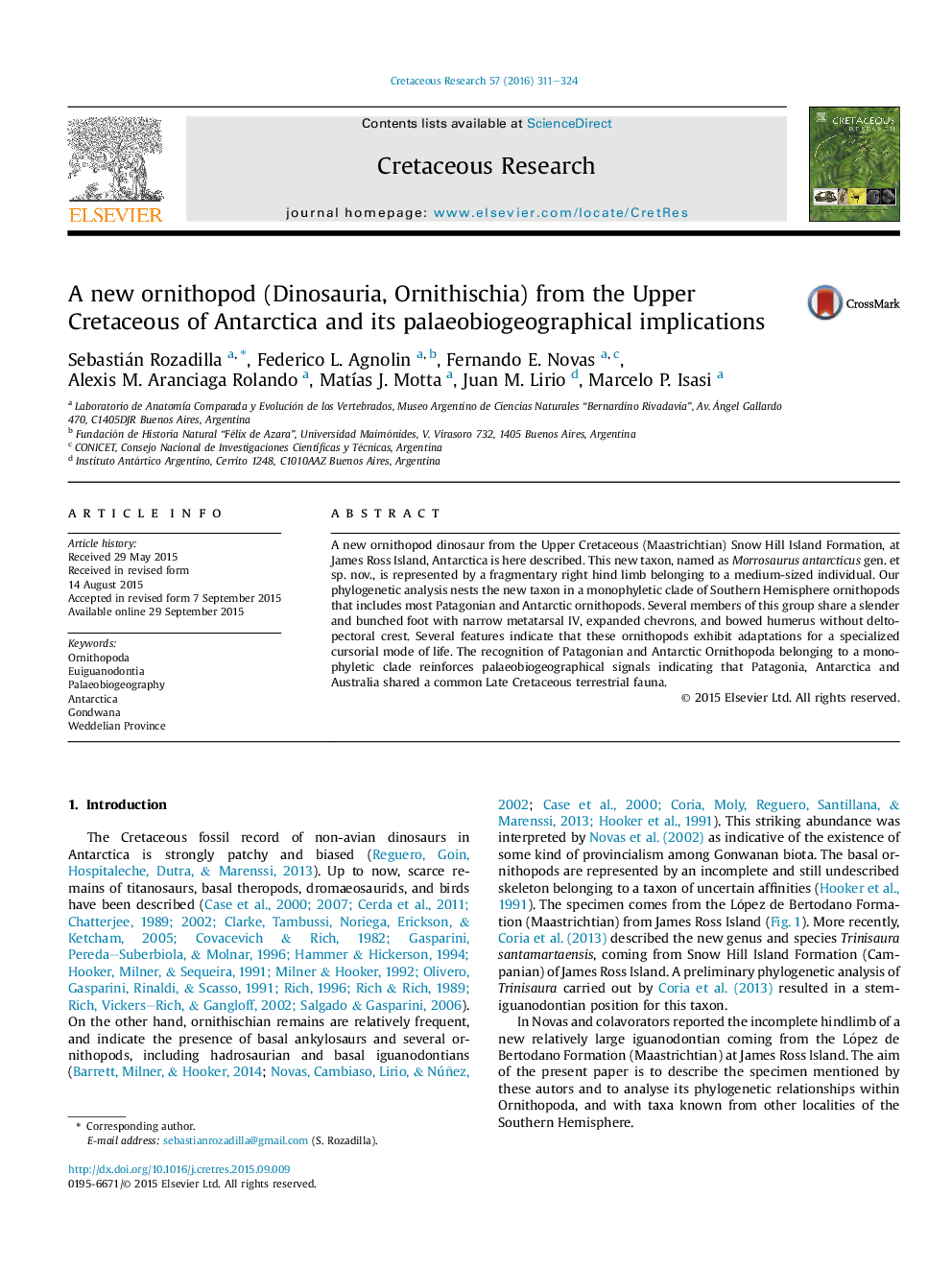| Article ID | Journal | Published Year | Pages | File Type |
|---|---|---|---|---|
| 4746852 | Cretaceous Research | 2016 | 14 Pages |
•New iguanodontian dinosaur from the Late Cretaceous (Maastrichtian) López de Bertodano Formation, at James Ross Island, Antarctica.•Phylogenetic analysis nests the new taxon in a monophyletic clade of Southern Hemisphere ornithopods.•Morphological features indicate that South American and Antarctic ornithopods exhibited adaptations for a specialized cursorial mode of life.•Present discovery reinforces hypothesis indicating that Patagonia, Antarctica and Australia shared a common Late Cretaceous terrestrial fauna.
A new ornithopod dinosaur from the Upper Cretaceous (Maastrichtian) Snow Hill Island Formation, at James Ross Island, Antarctica is here described. This new taxon, named as Morrosaurus antarcticus gen. et sp. nov., is represented by a fragmentary right hind limb belonging to a medium-sized individual. Our phylogenetic analysis nests the new taxon in a monophyletic clade of Southern Hemisphere ornithopods that includes most Patagonian and Antarctic ornithopods. Several members of this group share a slender and bunched foot with narrow metatarsal IV, expanded chevrons, and bowed humerus without deltopectoral crest. Several features indicate that these ornithopods exhibit adaptations for a specialized cursorial mode of life. The recognition of Patagonian and Antarctic Ornithopoda belonging to a monophyletic clade reinforces palaeobiogeographical signals indicating that Patagonia, Antarctica and Australia shared a common Late Cretaceous terrestrial fauna.
